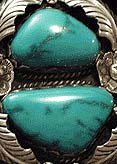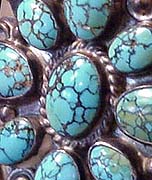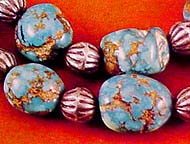|
Native American Indian Jewelry - Turquoise |
||
|
This index was created for fun and for educational purposes. It is by no means definitive or complete. If you enjoy it or learn something from it, great! If you feel you would like to comment please send us an email. We are always learning, and would love to hear what you have to share.
|
||
|
Turquoise comes from many sources and in many forms. Color varies from deep blue to green, with a wide range of inclusions that give each stone a unique look. Simply by looking at a piece, experts can often tell within a few miles the location where a stone was found. Many sources of turquoise used in older jewelry are no longer available, adding to the value of the piece. The value of turquoise is influenced by an enigmatic quality know as the "Zat", defined as the heavenly essence of the stone.
|
||
|
|
|
|
|
Burnham turquoise has a soft luster and unique blue-green color palette. The matrix patterns flow through the stone in a smoky wispy way. |
No. 8 mine spider web turquoise Spider web turquoise is a general term for a complex matrix of black lines, much like a spider web. |
Blue Gem |
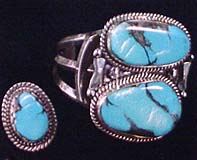
|
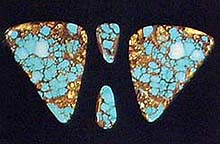
|
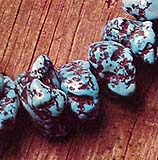
|
|
Bisbee Blue is know for its lovely deep blue color, rivaling Persian turquoise. Although it it typically blue, some veins are green, and there are many different types of matrix. |
Bisbee Blue with spider web matrix |
Kingman |
| The Cerillos and Burro Mountains, ten miles south of Santa Fe, were the largest producers of Turquoise in the USA until circa1920. About 75 color varieties can be found. |
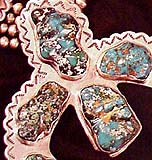
|
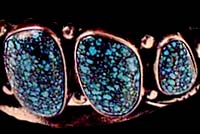
|
|
Cerrillo |
Fox Mine |
Lander's Blue Spider Web |
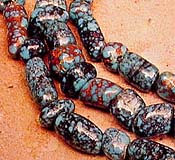
|
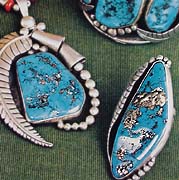
|
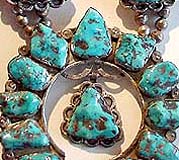
|
| Fossilized Lone Mountain | Morenci turquoise is a rich blue with iron pyrite inclusions forming a whispy black matrix. Pieces shown here are stabilized with gold and silver filling. | Poe Mine |

|
||
| Persian | Royston | |
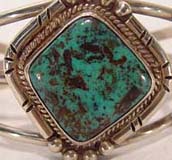
|
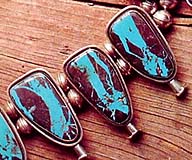
|
|
|
Smokey Mountain |
Stormy Ridge |
Village Grove |
|
for inquiries email info@galwest.com |
||
All pages on this web site are copyright 1998 to 2016 by Williams Gallery West
